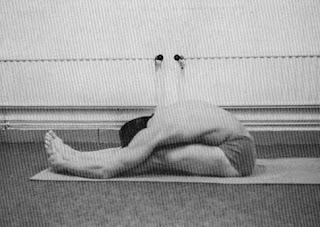The History of Ashtanga Yoga
 Twenty years ago Ashtanga yoga was very much a fringe activity. Our small, dedicated group of students in Encinitas, California were mostly young, hippie typeswith little money and few material possessions. We did have one precious thing – Ashtanga practice, which we all knew was very powerful and deeply transformative. Practicing together created a unique and magical bond, a real sense of family. Over the years the Ashtanga family has grown considerably throughout the world and I’ve had the opportunity to share the practice with many wonderful people as both a student and teacher. In Austin, Texas I met Larry Schultz 15 years ago when
Twenty years ago Ashtanga yoga was very much a fringe activity. Our small, dedicated group of students in Encinitas, California were mostly young, hippie typeswith little money and few material possessions. We did have one precious thing – Ashtanga practice, which we all knew was very powerful and deeply transformative. Practicing together created a unique and magical bond, a real sense of family. Over the years the Ashtanga family has grown considerably throughout the world and I’ve had the opportunity to share the practice with many wonderful people as both a student and teacher. In Austin, Texas I met Larry Schultz 15 years ago whenhe was just beginning his Ashtanga practice with my teacher, Pattabhi Jois. Even though the practice was very challenging for him, Larry approached it with great enthusiasm, optimism, and
gratitude. He, like so many others, recognized immediately that this was exactly what he had been looking for and was very excited by both the practice and the people involved in it. Larry and I have become close friends over the years and together we have witnessed the profound positive impact the Ashtanga practice has had on hundreds of people’s lives, particularly our
own. We have developed many wonderful friendships within the Ashtanga family and feel truly blessed to be able to share the practice with others. Motivated by this desire to share the practice, Larry opened It’s Yoga in 1991, which has become one of the largest and most successful yoga schools in San Francisco. A problem that Larry and I have encountered over the years is how to keep beginning students going with the practice when they are unable to attend class due to work, travel, family, etc. For the past 5,000 years Ashtanga yoga has existed as an oral tradition, so when beginning students asked for a practice guide we would hand them a piece of paper with stick figures of the first series postures. Larry gave Bob Weir such a sheet of paper a couple of years ago, to which Bob responded, “You’ve got to be kidding. I need a manual.”
Thus began Larry’s process of creating this manual, which has now been completed with the help of several friends. Now, happily when beginning students ask for a practice guide we can offer
them this excellent, practical, and informative manual.
Tim Miller
Senior Teacher Ashtanga Yoga
As the story goes, the ashtanga yoga system was reconstructed from a mysterious manuscript written on a bundle of palm leaves, the Yoga Korunta. This collection of verses on hatha yoga was discovered in the 1930’s by yoga master and Sanskrit scholar Sri Tirumalai Krishnamacharya and his disciple K. Pattabhi Jois while researching Sanskrit texts at a Calcutta university library. The manuscript is dated to be between 500 and 1,500 year old. Krishnamacharya and Jois translated and reconstructed the ashtanga yoga series (originally there were six sequences of postures) and Pattabhi Jois, with the encouragement of Krishnamacharya, took the instructions as the basis of his practice and teaching. He is still teaching this method today in Mysore, India at the age of 85. Ashtanga taught by Pattabhi Jois is a form of hatha yoga which focuses on asana (posture) and pranayama (breath control). Some
people call this ashtanga vinyasa yoga in order to distinguish between Patanjali’s eightfold system and the ashtanga yoga described in this manual.
as taught by Shri K. Pattabhi Jois



Comments